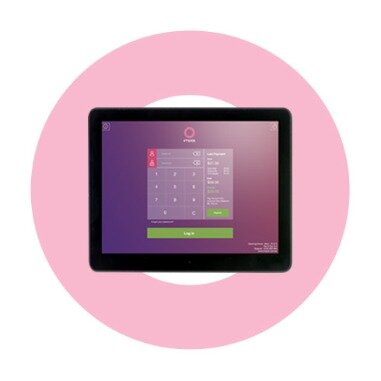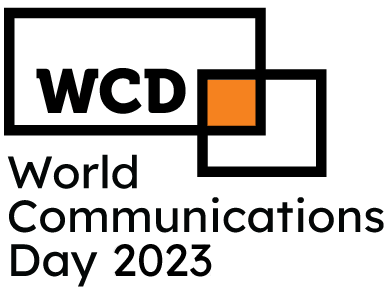Ideally, you should reconcile your bank account each time you receive a statement from your bank. This is often done at the end of every month, weekly and even at the end of each day by businesses that have a large number of transactions. In the bank books, the deposits are recorded on the credit side while the withdrawals are recorded on the debit side. The bank sends the account statement to its customers every month or at regular intervals. Bank reconciliation statements are effective tools for detecting fraud, theft, and loss.
Your bookkeeper will compare the bank statement to take note of any charges or fees to ensure that there were no mistakes made by the bank. When it comes to bookkeeping for small businesses, bank reconciliation is a very important aspect for any company. Reconciling your bank statement involves comparing your business transactions and balances with the bank’s transactions and balances. One reason for this is that your bank may have service charges or bank fees for things like too many withdrawals or overdrafts. Or there may be a delay when transferring money from one account to another. Or you could have written a NSF check (not sufficient funds) and recorded the amount normally in your books, without realizing there wasn’t insufficient balance and the check bounced.
If you run a current account and a credit card account, you’ll need both statements. Adjust the cash balances in the business account by adding interest or deducting monthly charges and overdraft fees. To successfully complete your bank reconciliation, you’ll need your bank statements for the current and previous months as well as your company ledger.
If you use the accrual system of accounting, you might “debit” your cash account when you finish a project and the client says “the cheque is going in the mail today, I promise! Then when you do your bank reconciliation a month later, you realize that cheque never came, and the money isn’t in your books (even though your bookkeeping shows you got paid). If you do your bookkeeping yourself, you should be prepared to reconcile your bank statements at regular intervals (more on that below). If you work with a bookkeeper or online bookkeeping service, they’ll handle it for you.
Errors Committed by your Business While Recording Transactions
When you do a bank reconciliation, you first find the bank transactions that are responsible for your books and your bank account being out of sync. You only need to reconcile bank statements if you use the accrual method of accounting. This is to confirm that all uncleared bank transactions you recorded actually went through. If you detect incorrect amounts or an omission in your books, you also need to correct those transactions so your records match the bank statements. As mentioned above, the process of comparing your cash book details with the records of your business’ bank transactions as recorded by the bank is known as bank reconciliation. As a result, the balance as per the bank statement is lower than the balance as per the cash book.
- Powered by technologies, such as AI/ML, advanced bank reconciliation software make anomaly detection, variance analysis, and financial close task management easier for analysts.
- If both the balances are equal, it means the bank reconciliation statement has been prepared correctly.
- These deposits are called deposits in transit and cause the bank statement balance to understate the company’s actual cash balance.
- A bank reconciliation begins by showing the bank statement’s ending balance and the company’s balance (book balance) in the cash account on the same date.
What is an accounting ledger Sage Advice USs compare transactions from financial records with those on a bank statement. Where there are discrepancies, companies can identify and correct the source of errors. A bank may charge an account maintenance fee, typically withdrawn and processed automatically from the bank account.
Reasons to Reconcile Your Bank Statement Each Month
Unrecorded transactions are not recorded in the company’s internal records, but they are reflected on the bank statement. Bookkeepers comb through the transactions listed in the accounting journal and compare them to the transactions listed on the bank statement. Unrecorded transactions can indicate that the transactions were not entered into the accounting system or that a check or deposit lost or stolen. After identifying the reasons your bank statement doesn’t match accounting records, you have to update your records. If the bank has made errors, notify them so that they correct the transactions.
Therefore, company records may include a number of checks that do not appear on the bank statement. These checks are called outstanding checks and cause the bank statement balance to overstate the company’s actual cash balance. Since outstanding checks have already been recorded in the company’s books as cash disbursements, they must be subtracted from the bank statement balance. Once the adjusted balance of the cash book is worked out, then the bank reconciliation statement can be prepared. In this way, the number of items that cause the difference between the passbook and the cash book balance gets reduced.

Do you want to test your knowledge about bank reconciliation statement? (f) The cash book does not contain a record of bank charges, $70, raised on 31 May. While this will cause a discrepancy in balances at the end of the month, the difference will automatically correct itself once the bank collects the checks. Best practices in bank reconciliation vary from business to business, especially as a company grows and its operations become more complex. The following tips, however, can be applied to any organization’s bank reconciliations. If a transaction isn’t showing on your bank statement, it’s most likely because you got income that you didn’t bank, or you paid for something out of a different account or with cash.
Would you prefer to work with a financial professional remotely or in-person?
A bank reconciliation statement can help you identify differences between your company’s bank and book balances. You will need to add in bank fees or penalties and subtract interest income that has been recorded by your bank. If any errors were made in the accounting records, they will need to be adjusted here as well. Additionally, it is common for your bank to deduct fees and penalties and add interest income directly to your bank account. Unless you are tracking your bank account balance on a daily basis, your business may not have recorded these transactions on its books prior to the reconciliation process.
When you perform a bank reconciliation, you are ensuring your business records have captured all cash transactions accurately. It is also an opportunity to double check your bank’s records to identify any errors in the transactions in your bank account. Check the balances of the bank statements and the cash balance in your books after you’ve adjusted all the transactions and compared them. If not, there may be checks outstanding or deposits in transit or you may need to perform another reconciliation.
Business books show something that’s not on your bank statement?
The bank reconciliation process, in particular, helps to identify any financial gaps or discrepancies and should be performed internally at least once a month and once per year by an external auditor. After adjusting the balance as per the cash book, make sure that you record all adjustments in your company’s general ledger accounts. Such a time lag is responsible for the differences that arise in your cash book balance and your passbook balance. As mentioned above, debit balance as per the cash book refers to the deposits held in the bank. This balance exists when the deposits made by your business at your bank are more than the withdrawals. If you want to prepare a bank reconciliation statement using either of these approaches, you can take balance as per the cash book or balance as per the passbook as your starting point.
A business’s investments in marketing, R&D and technology all depend on it having the necessary level of cash. Bank reconciliation is one of the processes that tells a company, at any given point in time, whether it’s in a position to fund something new or should hold back. And set up a system that makes it quick and easy to grab the records you need. The review of 100% balance sheet reconciliations before ledger close.
Bank reconciliations are like a fail-safe for making sure your accounts receivable never get out of control. And if you’re consistently seeing a discrepancy in accounts receivable between your balance sheet and your bank, you know you have a deeper issue to fix. A bank recon helps you manage your cash flow, enabling you time your income to ensure you have sufficient funds for expenses. It’s time to evaluate a new tool, not only for an effective control framework and audit process but for the balance sheet reconciliations overall. The accounting department is responsible for mitigating risk for the organization, not adding to the concern.
The articles and research support materials available on this site are educational and are not intended to be investment or tax advice. All such information is provided solely for convenience purposes only and all users thereof should be guided accordingly. Nevertheless, on 5 June, when the bank pays the check, the difference will cease to exist. Here’s an example of how By the Bay Contracting’s bank reconciliation would look.
